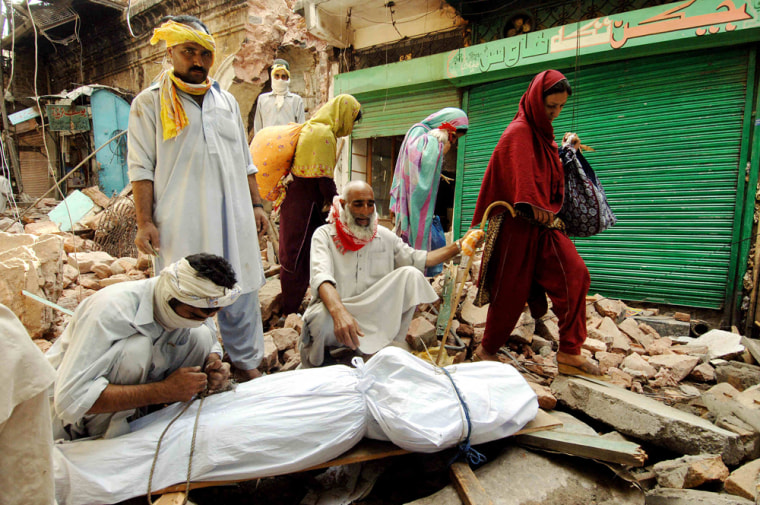Measles and waterborne diseases such as cholera and diarrhea could spread quickly among victims of south Asia’s devastating earthquake, the United Nations warned Tuesday.
The quake damaged sanitation systems in the region, destroyed hospitals and left many victims with no access to clean drinking water, making them more vulnerable to disease.
“Measles could potentially become a serious problem,” said Fadela Chaib, spokeswoman for the World Health Organization. “We fear that if people huddle closely together in temporary shelters and crowded conditions more measles cases could occur.”
Measles — deadly for children — are already endemic in the region and only 60 percent of the children are protected. At least 90 percent coverage is needed to prevent an epidemic, WHO said. The agency will soon start gathering essential vaccines for a mass immunization program.
Half of Pakistan’s population is under the age of 16, and 20 percent is under 5.
Another U.N. agency, UNICEF, said it was worried about the high number of children among the victims.
Because the earthquake struck in the morning just as school was starting, many children and parents lost track of each other. “We are trying to unify those children with their families,” said spokesman Damien Personnaz.
Meanwhile, first deliveries of high-energy, vitamin-fortified cookies to feed 240,000 people were expected to reach victims Tuesday.
Survivors of Saturday’s 7.6-magnitude earthquake are desperate for food, water and warming shelters after the quake flattened entire villages and cut off whole regions, killing tens of thousands.
“Many people have lost all their food stocks and stoves in the quake ... and they need ready-to-eat food,” said WFP spokesman Simon Pluess. He said his agency was prepared to feed one million people for a month.
Helicopters are the most urgently needed item, as many of the affected regions have been cut off, said the U.N.’s Office for Coordination of Human Affairs.
“At this moment the big needs are helicopters, winterized tents, warm clothing and blankets and maybe heaters,” said OCHA spokeswoman Elisabeth Byrs. Temperatures are falling below 32 degrees at night.
The United States has diverted eight helicopters from the war in neighboring Afghanistan, while NATO military commanders were drawing up plans for sending emergency aid.
Based on reports from the field, OCHA estimates that several hundred hospitals and other medical facilities have been destroyed, leaving many doctors and nurses dead or injured.
OCHA appealed to its donors to give $272 million for “lifesaving and early recovery activities for a six-month emergency phase.”
WHO is sending essential medicine to cover the needs of 210,000 people for one month as well as equipment for doctors to perform 1,000 operations.
But international aid agencies warned that the situation could worsen as people try to leave the worst-hit areas, such as the city of Muzaffarabad.
“People are trying to leave,” said Vincent Lusser, spokesman for the International Committee of the Red Cross. “People are getting impatient with the aid coming in or not coming in and some are even getting aggressive.”
ICRC has also set up a Web site where people can register themselves or trace their family members and friends lost during the earthquake with the help of ICRC staff.
Numerous countries, including impoverished Bangladesh and Indonesia, which is still in the early stages of rebuilding from the devastating Dec. 26 tsunami that killed 131,000 there, committed funds and relief material including helicopters, tents, blankets, medical aid and food kits.
